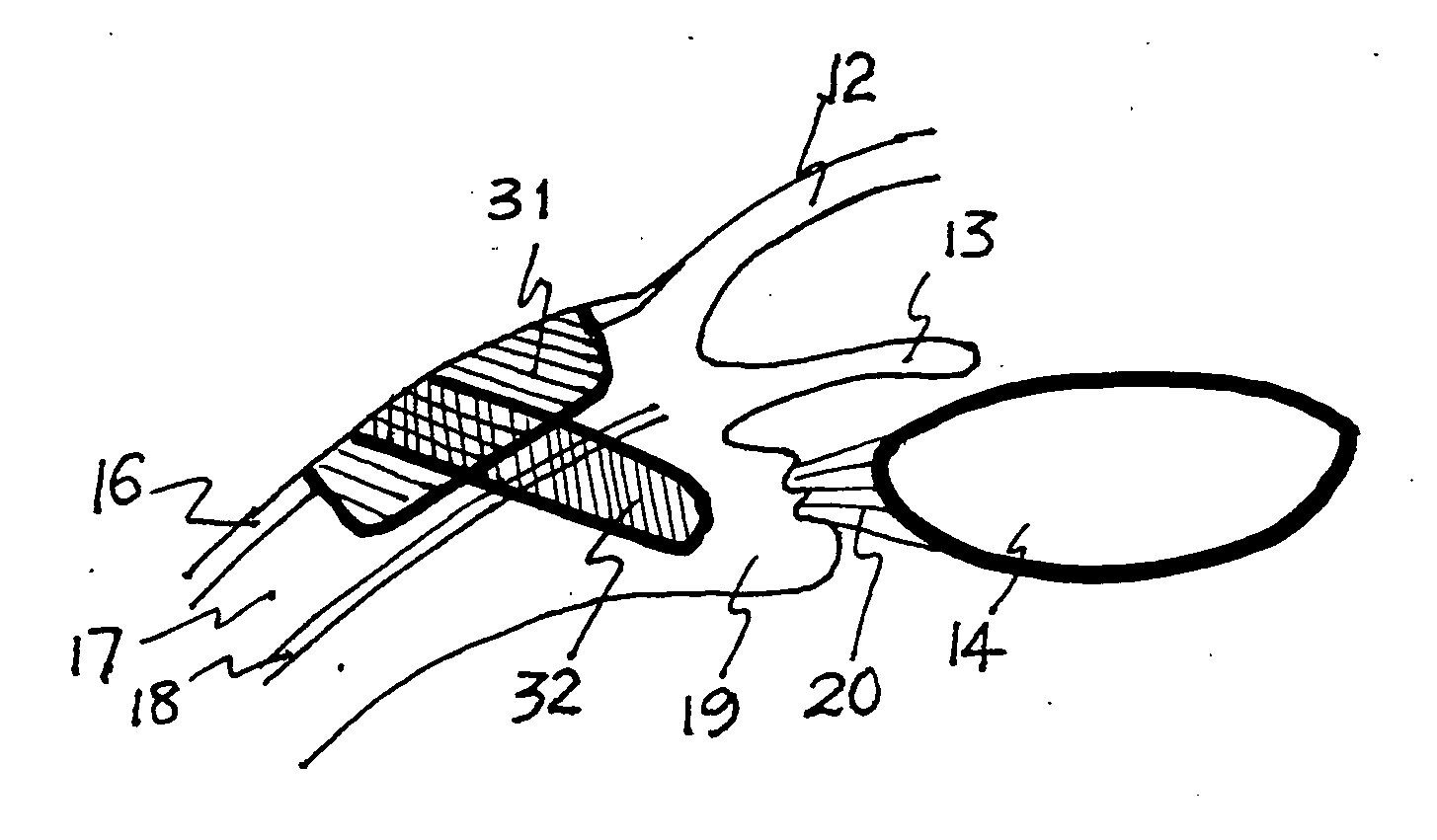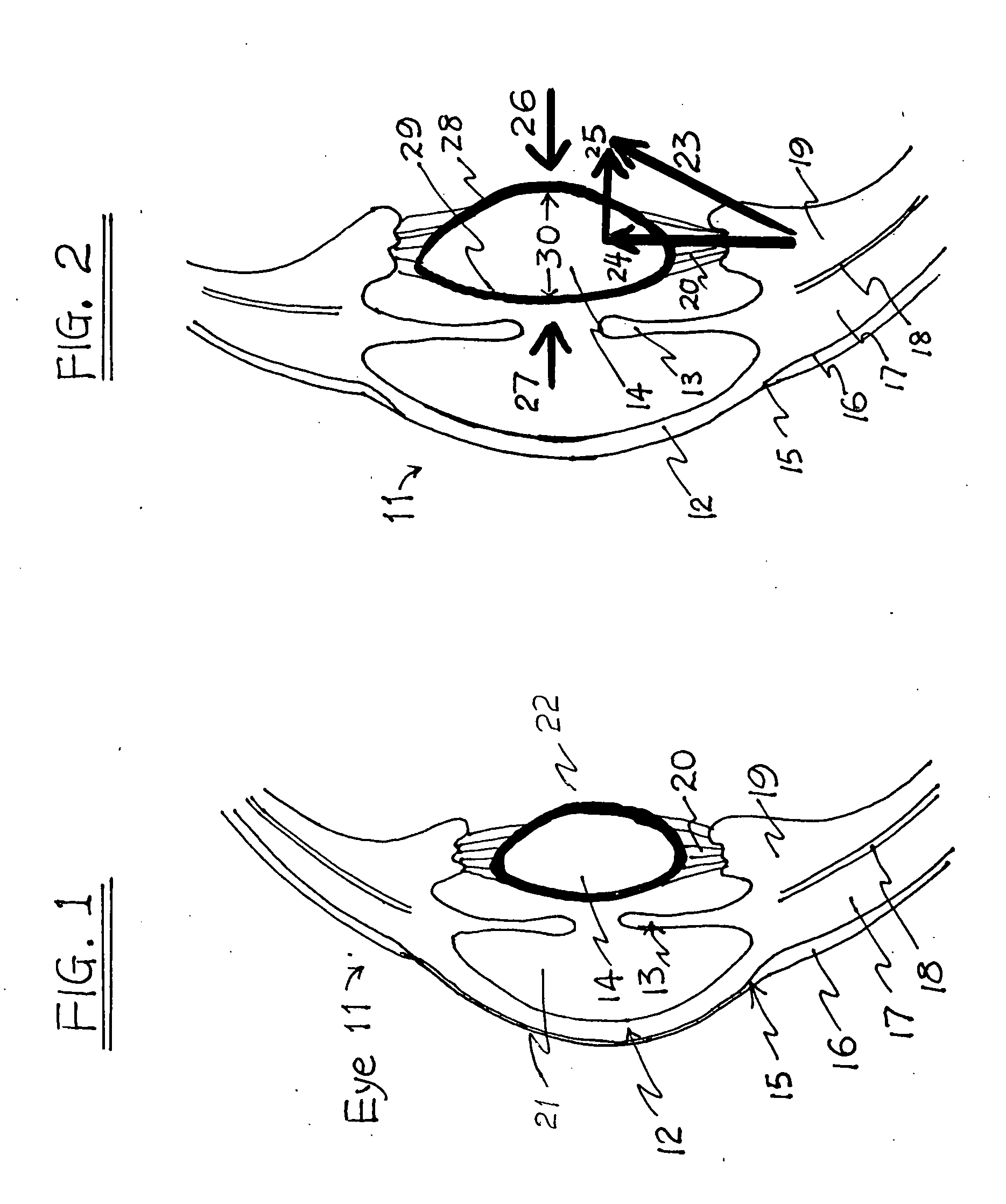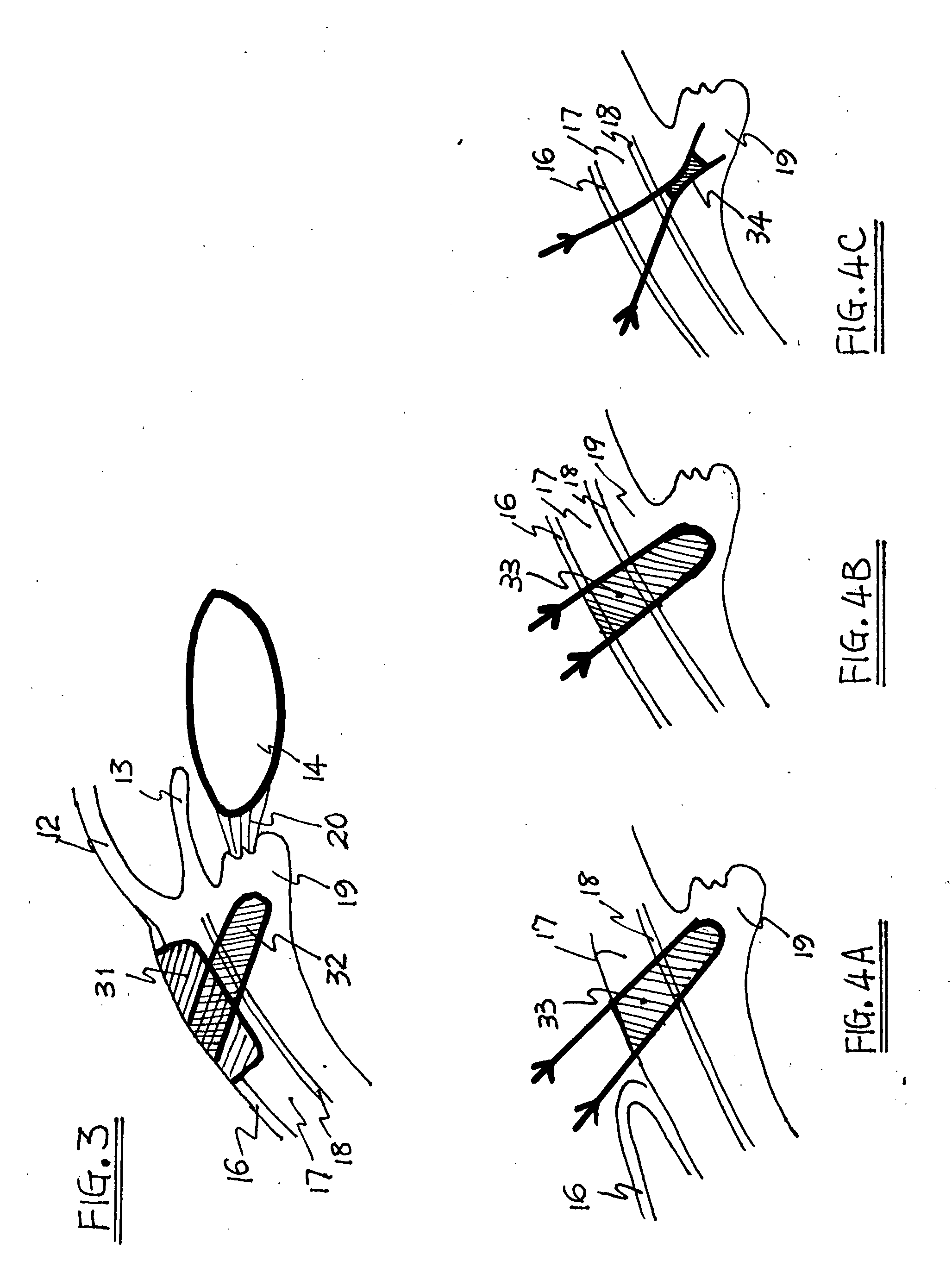Method and apparatus for the treatment of presbyopia and glaucoma by ciliary body ablation
a technology of ciliary body and presbyopia, applied in the field of presbyopia and glaucoma treatment, can solve the problems of prior art using lasers to reshape the corneal surface curvature, limited to myopia, hyperopia, methods, etc., and achieve the effect of improving post-operative results
- Summary
- Abstract
- Description
- Claims
- Application Information
AI Technical Summary
Benefits of technology
Problems solved by technology
Method used
Image
Examples
Embodiment Construction
[0032] A surgical system in accordance with the present invention comprises a tissue removal or ablation means includes electromagnetic wave such as a coherent wave (or laser), and non-laser wave such as radio frequency (RF) wave, electrode device, bipolar device and plasma assisted electro-surgical device. When a RF devices are used, the preferred embodiment requires a minimum thermal damage to the sclera and ciliary tissue with efficient ablation which can be controlled by its frequency (10 to 1000) KHz, pulse duration, 100 microseconds to continuous wave, and its power output (0.1-20) W. The “ablation” is defined in a general sense to include tissue removal by means of excision or evaporation. The dimension of the removed tissue, its depth, width and length are controlled by the energy, peak power, fluency and spot size of the energy wave. When a laser is used, we also require efficient tissue ablation with minimal thermal damage. Therefore, the preferred laser wavelength is the ...
PUM
 Login to View More
Login to View More Abstract
Description
Claims
Application Information
 Login to View More
Login to View More - R&D
- Intellectual Property
- Life Sciences
- Materials
- Tech Scout
- Unparalleled Data Quality
- Higher Quality Content
- 60% Fewer Hallucinations
Browse by: Latest US Patents, China's latest patents, Technical Efficacy Thesaurus, Application Domain, Technology Topic, Popular Technical Reports.
© 2025 PatSnap. All rights reserved.Legal|Privacy policy|Modern Slavery Act Transparency Statement|Sitemap|About US| Contact US: help@patsnap.com



